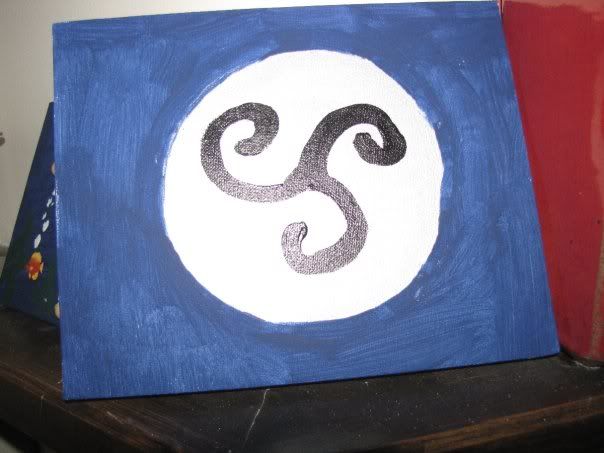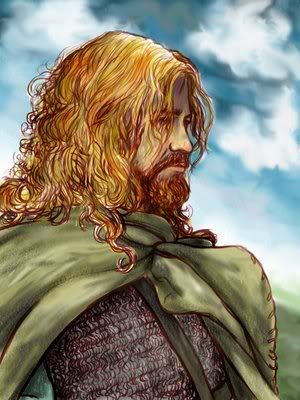Thule, Saturn, & an alternative explanation: Part 1
The ancient original Teutonic homeland which I have loosely coined "Týrland," was first written about by ancient Greeks and Romans (Thule). This land was apparently based on legends of a land in the "far north" going clear back into the ancient world. Speculation since the time of these writings has always suggested various locations in the far north of Europe, Greenland, and northern stretches of western Asia. It was not even determined who the inhabitants of Thule were. Therefore, then as now, Thule has become something of a legend such as Atlantis or Lemuria.
Thule (Wikipedia)
Thule (Greek: Θούλη, Thoúlē), also spelled Thula, Thila, or Thyïlea, is, in classical European literature and maps, a region in the far north. Though often considered to be an island in antiquity, modern interpretations of what was meant by Thule often identify it as Norway, an identification supported by modern calculations. Other interpretations include Orkney, Shetland, and Scandinavia. In the Late Middle Ages and Renaissance, Thule was often identified as Iceland or Greenland. Another suggested location is Saaremaa in the Baltic Sea. The term ultima Thule in medieval geographies denotes any distant place located beyond the "borders of the known world". Sometimes it is used as a proper noun (Ultima Thule) as the Latin name for Greenland when Thule is used for Iceland.
Ancient geography
The Greek explorer Pytheas is the first to have written of Thule, doing so in his now lost work, On the Ocean, after his travels between 330 BC and 320 BC. He supposedly was sent out by the Greek city of Massalia to see where their trade-goods were coming from. Descriptions of some of his discoveries have survived in the works of later, often skeptical, authors. Polybius in his Histories (c. 140 BC), Book XXXIV, cites Pytheas as one "who has led many people into error by saying that he traversed the whole of Britain on foot, giving the island a circumference of forty thousand stades, and telling us also about Thule, those regions in which there was no longer any proper land nor sea nor air, but a sort of mixture of all three of the consistency of a jellyfish in which one can neither walk nor sail, holding everything together, so to speak."
Strabo in his Geography (c. 30), Book I, Chapter 4, mentions Thule in describing Eratosthenes' calculation of "the breadth of the inhabited world" and notes that Pytheas says it "is a six days' sail north of Britain, and is near the frozen sea." But he then doubts this claim, writing that Pytheas has "been found, upon scrutiny, to be an arch falsifier, but the men who have seen Britain and Ierne (Ireland) do not mention Thule, though they speak of other islands, small ones, about Britain." Strabo adds the following in Book II, Chapter 5:
Now Pytheas of Massilia tells us that Thule, the most northerly of the Britannic Islands, is farthest north, and that there the circle of the summer tropic is the same as the Arctic Circle. But from the other writers I learn nothing on the subject—neither that there exists a certain island by the name of Thule, nor whether the northern regions are inhabitable up to the point where the summer tropic becomes the Arctic Circle.
 Strabo ultimately concludes, in Book IV, Chapter 5, "Concerning Thule, our historical information is still more uncertain, on account of its outside position; for Thule, of all the countries that are named, is set farthest north."
Strabo ultimately concludes, in Book IV, Chapter 5, "Concerning Thule, our historical information is still more uncertain, on account of its outside position; for Thule, of all the countries that are named, is set farthest north."Nearly a half century later, in 77, Pliny the Elder published his Natural History in which he also cites Pytheas' claim (in Book II, Chapter 75) that Thule is a six-day sail north of Britain. Then, when discussing the islands around Britain in Book IV, Chapter 16, he writes: "The farthest of all, which are known and spoke of, is Thule; in which there be no nights at all, as we have declared, about mid-summer, namely when the Sun passes through the sign Cancer; and contrariwise no days in mid-winter: and each of these times they suppose, do last six months, all day, or all night." Finally, in refining the island's location, he places it along the most northerly parallel of those he describes, writing in Book VI, Chapter 34,: "Last of all is the Scythian parallel, from the Rhiphean hills into Thule: wherein (as we said) it is day and night continually by turns (for six months)."
The Roman geographer Pomponius Mela placed Thule north of Scythia.
When scientists of the Institute of Geodesy and Geoinformation Science of the Technical University of Berlin were testing the antique maps of Ptolemy, they recognized a pattern of calculation mistakes which occurred if one tried to convert the old coordinates from Ptolemy into modern geographical coordinates. After correcting for the mistakes, the scientists mapped Ptolemy's Thule to the Norwegian island Smøla.
Other late classical writers and post-classical writers such as Orosius (384-420 A.D) and the Irish monk Dicuil (late 8th and early 9th century), describe Thule as being North and West of both Ireland and Britain. Dicuil described Thule as being beyond islands that seem to be the Faroes, strongly suggesting Iceland. In the writings of the historian Procopius, from the first half of the 6th century, Thule is a large island in the north inhabited by twenty-five tribes. It is believed that Procopius is really talking about a part of Scandinavia, since several tribes are easily identified, including the Geats (Gautoi) in present-day Sweden and the Saami (Scrithiphini). He also writes that when the Heruls returned, they passed the Varni and the Danes and then crossed the sea to Thule, where they settled beside the Geats.
Ancient literature
Virgil coined the term Ultima Thule (Georgics, 1. 30) meaning furthest land as a symbolic reference to denote a far-off land or an unattainable goal.
The 1st century BC Greek astronomer Geminus of Rhodes claimed that the name Thule went back to an archaic word for the polar night phenomenon – "the place where the sun goes to rest". Dionysius Periegetes in his De situ habitabilis orbis also touched upon this subject as did Martianus Capella. Avienus in his 'Ora Maritima' added that during the summer on Thule night lasted only two hours, a clear reference to the midnight sun.
Cleomedes referenced Pytheas' journey to Thule, but added no new information.
 A novel in Greek by Antonius Diogenes entitled The Wonders Beyond Thule appeared c. AD 150 or earlier. Gerald N. Sandy, in the introduction to his translation of Photius' ninth-century summary of the work, surmises that Thule was "probably Iceland."
A novel in Greek by Antonius Diogenes entitled The Wonders Beyond Thule appeared c. AD 150 or earlier. Gerald N. Sandy, in the introduction to his translation of Photius' ninth-century summary of the work, surmises that Thule was "probably Iceland."The Latin grammarian Gaius Julius Solinus in the 3rd century AD, wrote in his Polyhistor that Thule was a 5 days sail from Orkney:
...Ab Orcadibus Thylen usque quinque dierum ac noctium navigatio est; sed Thyle larga et diutina Pomona copiosa est.
...Thyle, which was distant from Orkney by a voyage of five days and nights, was fruitful and abundant in the lasting yield of its crops.
The 4th century Virgilian commentator Servius also believed that Thule sat close to Orkney:
...Thule; insula est Oceani inter septemtrionalem et occidentalem plagam, ultra Britanniam, iuxta Orcades et Hiberniam; in hac Thule cum sol in Cancro est, perpetui dies sine noctibus dicuntur...
...Thule; an island in the Ocean between the northern and western zone, beyond Britain, near Orkney and Ireland; in this Thule, when the sun is in Cancer, it is said that there are perpetual days without nights...
Early in the fifth century AD Claudian, in his poem, On the Fourth Consulship of the Emperor Honorius, Book VIII, rhapsodizes on the conquests of the emperor Theodosius I, declaring that the Orcades ran red with Saxon slaughter; Thule was warm with the blood of Picts; ice-bound Hibernia [Ireland] wept for the heaps of slain Scots." This implies that Thule was Scotland. But in Against Rufinias, the Second Poem, Claudian writes of "Thule lying icebound beneath the pole-star." Jordanes in his Getica also wrote that Thule sat under the pole-star.
Over time the known world came to be viewed as bounded in the east by India and in the west by Thule, as expressed in the Consolation of Philosophy (III, 203 = metrus V, v. 7) by Boethius.
For though the earth, as far as India's shore, tremble before the laws you give, though Thule bow to your service on earth's farthest bounds, yet if thou canst not drive away black cares, if thou canst not put to flight complaints, then is no true power thine.
The Roman historian Tacitus, in his book chronicling the life of his father-in-law, Agricola, describes how the Romans knew that Britain (which Agricola was commander of) was an island. He writes of a Roman ship that circumnavigated Britain, and discovered the Orkney islands and says the ship's crew even sighted Thule. However their orders were not to explore there, as winter was at hand.
Seneca the Younger writes of a day when new lands will be discovered past Thule. This was later quoted widely in the context of Christopher Columbus' discovery of America.
.


No comments:
Post a Comment